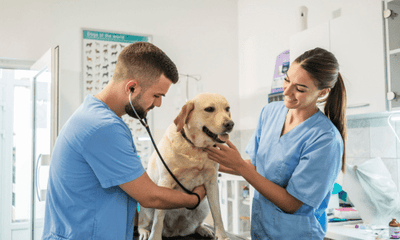A horse’s hooves are the foundation of its overall health, movement, and performance. Strong, well-maintained hooves are essential for comfort, soundness, and longevity, whether your horse is a competition athlete, a working partner, or a cherished companion. Without proper hoof care, horses can develop issues like cracks, thrush, abscesses, and lameness, which can lead to long-term problems. Understanding the key factors that contribute to hoof health, including nutrition, daily maintenance, professional care, and environmental management, is essential to keeping your horse sound and comfortable.
Nutrition: The Foundation of Strong Hooves
A balanced diet is one of the most important factors in maintaining healthy hooves. Hooves are primarily composed of keratin, the same protein that makes up a horse’s mane and tail. Essential nutrients such as biotin, zinc, copper, and amino acids play a crucial role in promoting strong hoof growth and preventing common issues like cracking and brittleness. Omega fatty acids help maintain proper moisture levels, reducing the risk of dry, brittle hooves, while minerals like calcium and phosphorus contribute to overall hoof structure. Feeding a high-quality diet that includes these key nutrients, can significantly improve hoof strength and resilience.
If your horse’s hooves need extra support, adding a supplement to their diet can help promote strong, healthy hoof growth and repair. The Aussie Farrier Hoof Growth Supplement is a highly palatable pellet formula designed to encourage strong connective tissue and hoof development, using a lucerne base for easy feeding.
For horses requiring targeted hoof support, Ranvet Hoof Food Pellet provides the daily biotin requirement, along with essential co-factors that enhance hoof strength and resilience, helping cracks and defects grow out. Value Plus Biotin is another excellent option, promoting overall hoof health while also supporting a shiny coat and healthy skin. This high-quality powdered supplement is easy to mix with daily feed, making it a convenient choice for ongoing hoof care.
By incorporating a well-balanced hoof supplement into your horse’s diet, you can help maintain strong, durable hooves and reduce the risk of common hoof problems.
Establishing a Regular Hoof Care Routine
Daily hoof care is essential for preventing infections, cracks, and lameness, ensuring your horse stays comfortable and sound. Picking out hooves each day helps remove dirt, stones, and manure buildup that could cause discomfort or lead to infection. Regularly checking for cracks, chips, or sensitivity allows you to catch potential issues early before they develop into serious problems. The frog should also be inspected for signs of thrush, a bacterial infection that thrives in damp conditions and produces a foul-smelling discharge.
Keeping hooves clean and dry is crucial for preventing bacterial and fungal infections, while applying a hoof conditioner or oil can help maintain hydration and flexibility, especially in horses with dry, brittle hooves. Kelato Hoof Prime is an excellent choice for strengthening, nourishing, and protecting the hoof. This premium dressing penetrates the hoof wall, delivering essential nourishment to both the inner and outer structures to ensure lasting strength and flexibility. By maintaining a consistent hoof care routine, you can help support strong, resilient hooves and reduce the risk of common hoof problems.
The Importance of Regular Farrier Visits
Scheduling routine farrier visits every four to eight weeks is crucial for maintaining proper hoof balance and shape. Regular trimming helps prevent overgrowth, imbalances, and lameness. Horses with uneven hoof growth or flaring may require corrective trimming, while those in work may need specialised shoeing for extra support. If hooves become too long or misshapen, the risk of cracks, infections, and strain on the joints increases. Working with a skilled farrier ensures your horse’s hooves stay in the best possible condition, reducing the likelihood of lameness and discomfort.
Managing the Environment for Optimal Hoof Health
A horse’s environment plays a significant role in hoof health. Prolonged exposure to wet, muddy conditions can weaken hooves and promote bacterial infections, while excessively dry environments can lead to cracks and brittleness. Keeping paddocks and stalls clean is essential to reducing exposure to moisture and bacteria. Providing well-draining footing in turnout areas and shelters helps prevent hooves from becoming too soft or too hard. If conditions are particularly wet, applying a Hoof Oil such as World’s Best Hoof Oil can help strengthen hooves and protect against excessive moisture absorption. On the other hand, if the environment is dry, offering a sand or gravel area for turnout can help prevent hooves from drying out and cracking.
Preventing and Treating Common Hoof Problems
Even with the best care, horses can still develop hoof-related issues. Recognising and addressing these problems early can prevent long-term damage and discomfort. Hoof cracks, whether superficial or deep, can compromise the integrity of the hoof wall and lead to further complications. Regular trimming and the application of a hoof oil can help prevent cracking.
Abscesses, which occur when bacteria become trapped inside the hoof, can cause sudden lameness and require treatment to drain the infection. Laminitis is one of the most serious hoof conditions and occurs when the sensitive laminae inside the hoof become inflamed. This can result in severe pain and lameness, often requiring immediate veterinary attention. Managing a horse’s diet carefully, avoiding high-sugar feeds, and ensuring regular exercise can help reduce the risk of laminitis. Prevention is always the best approach when it comes to hoof health, and by staying vigilant, horse owners can minimise the risk of these common problems.
Encouraging Natural Hoof Strength Through Movement
Exercise and movement play a vital role in hoof health. Horses that stand in stalls or small paddocks for extended periods are more prone to hoof problems. Regular movement stimulates hoof circulation and encourages natural hoof wear. Turnout on varied terrain helps condition hooves and prevent excessive wear in certain areas. Trail riding, arena work, and other forms of exercise can help maintain strong, well-conditioned hooves. For horses that are barefoot, hoof boots can provide extra protection when riding on rough surfaces, preventing excessive wear while still allowing for natural hoof function.
A proactive approach to hoof care is essential for maintaining a horse’s soundness and overall well-being. By providing proper nutrition, establishing a consistent hoof care routine, scheduling regular farrier visits, and managing environmental conditions, horse owners can significantly reduce the risk of hoof-related problems. Monitoring for early signs of issues and addressing them promptly can prevent minor concerns from turning into major health problems.
At Woonona Petfoods, we stock a range of hoof care products, including hoof supplements, moisturisers, and antifungal treatments, to support your horse’s hoof health. Visit us in-store or shop online to find everything you need to keep your horse’s hooves strong and healthy.






